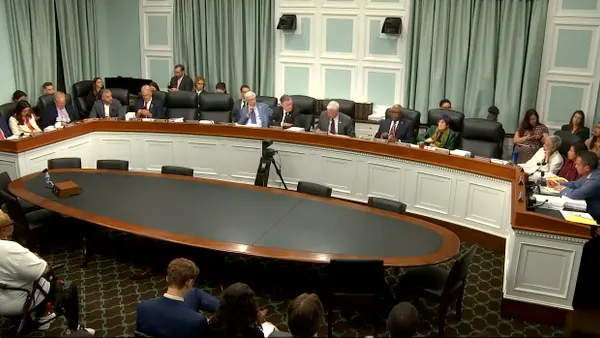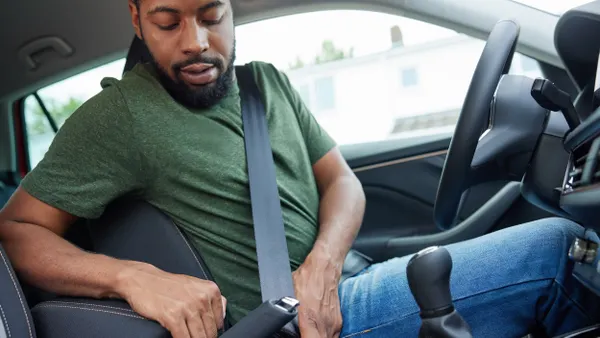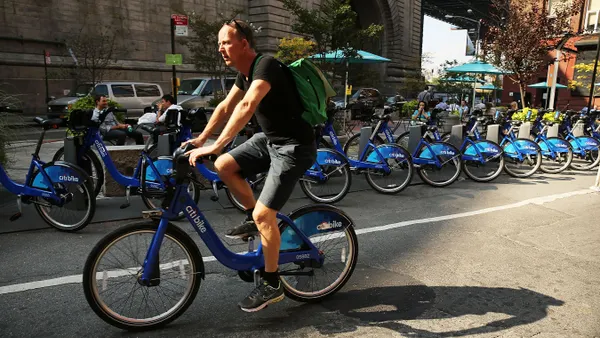Dive Brief:
- On Wednesday, protesters in Philadelphia formed a human barrier along a bike lane where a 24-year-old bicyclist was killed earlier this week and demanded safer bike lanes across the city, according to Philly.com.
- Philly.com reports that Philadelphia has approximately 200 miles of roads with bike lanes, however only 2.5 miles of protected lanes — most of which use flexible poles as a barrier — have been created. In his 2015 mayoral campaign, Mayor Kenney pledged to build more than 30 miles of protected bike lanes by 2022.
- Since 2010, at least 26 bicyclists have died in accidents on Philadelphia streets, according to Philly.com.
Dive Insight:
The lack of protected bike lanes in Philadelphia has caused an uproar on social media, where residents and activists have exposed the city's lack of protected infrastructure through various photos and posts. Some have even included #VisionZeroPHL in tweets about the bike lanes, pointing to the city's goal to eliminate traffic-related deaths.
Unprotected bike lanes still don't work. #bikePHL #VisionZeroPHL pic.twitter.com/XQgimi0avy
— Phila. Bikes (@philabikes) November 29, 2017
While Mayor Kenney has advocated for safer bike lanes, not much has been done to follow through on his campaign pledge. While some lanes have been painted for more clear visibility, the lack of a physical barrier at these lanes still put bicyclists at risk. Philly.com reports that Philadelphia received a $250,000 grant for protected bike lanes earlier this year, however not much has been done yet with that money. Additionally, Philadelphia leaders will need to redesign some streets to ensure bike lanes are at least nine feet wide, which is easier said than done — especially while receiving backlash from opponents who would rather prioritize parking space.
Philadelphia has recently made strides as a smart city — it launched a unique SmartCityPHL initiative and is engaging community members to ensure needs are met — however this issue may stand as an obstacle on the path to a smarter and safer future. The fatalities that have occurred due to the lack of protected bike lanes may have been prevented with the proper infrastructure, and it is now on the city to ensure no more residents are put at harm because of mobility limitations.










